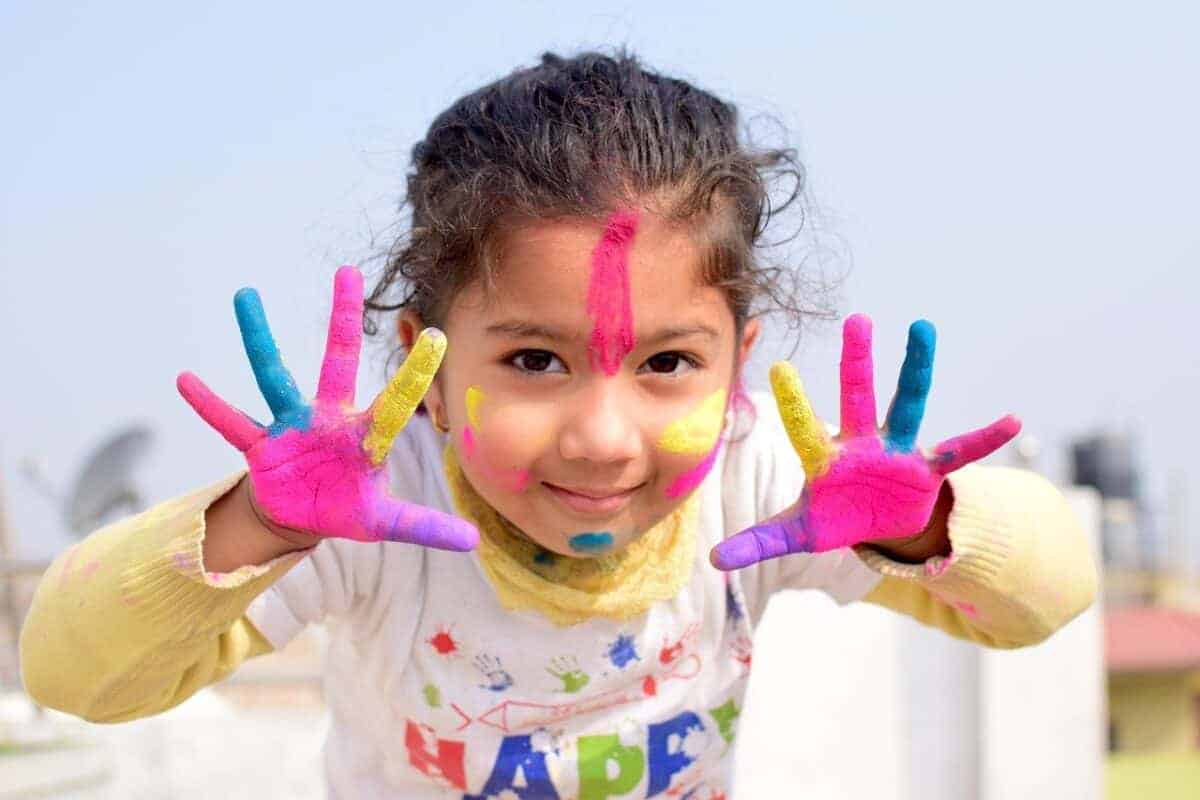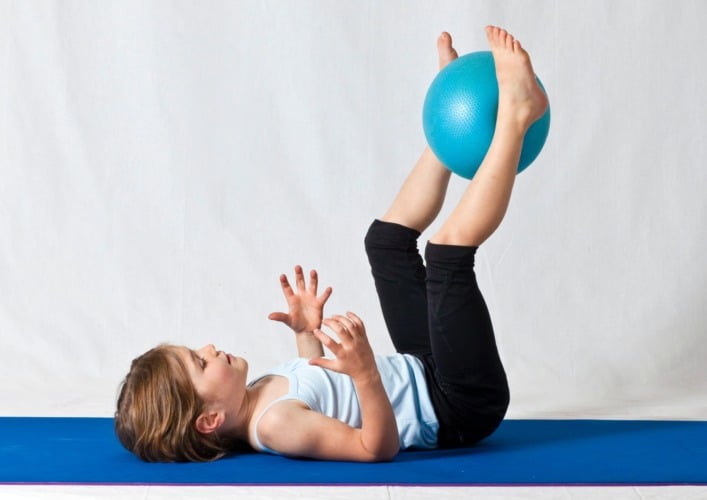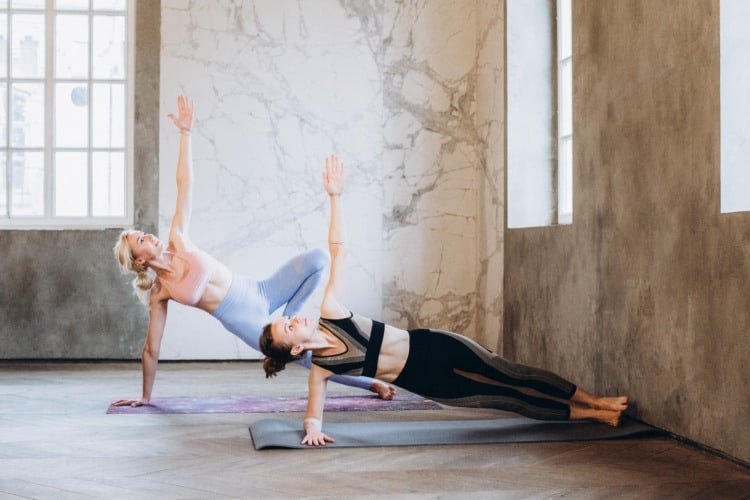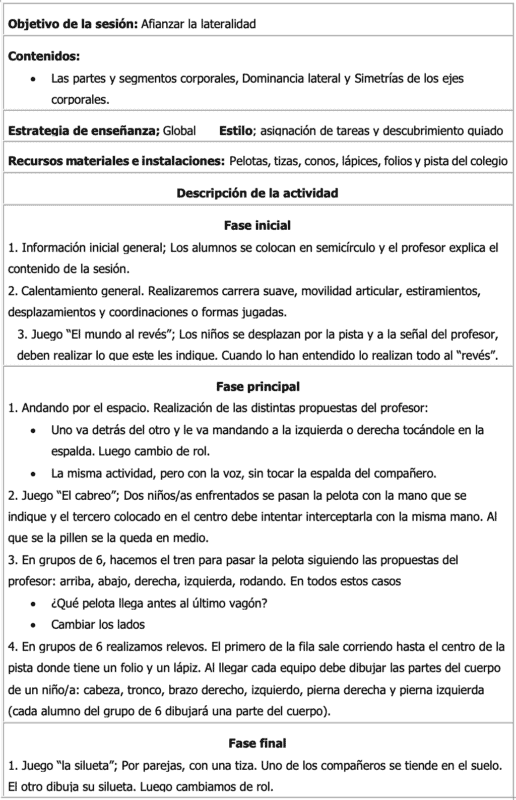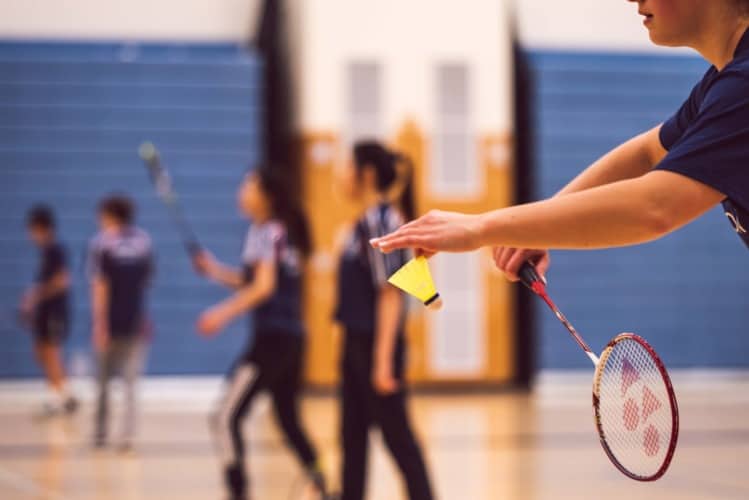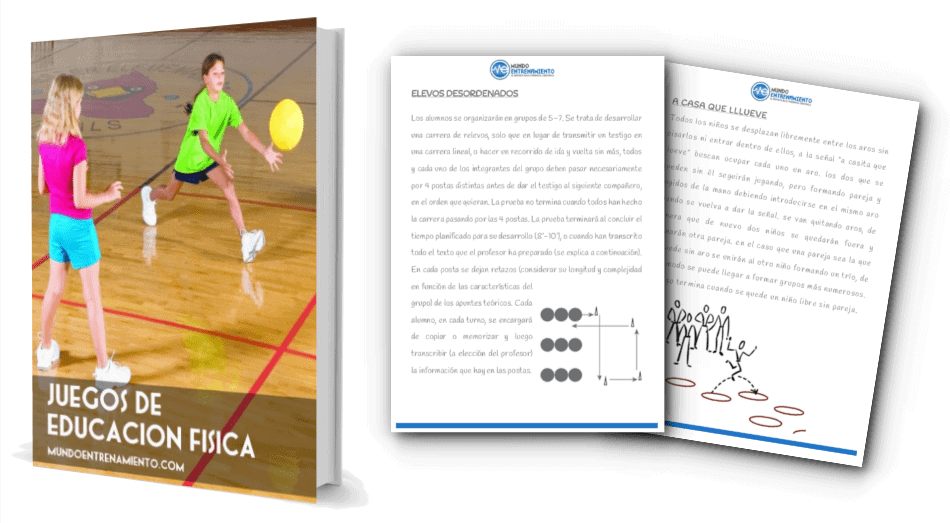In the following article, laterality in Physical Education is addressed as an essential part for the complete motor development of children and adolescents.
The concept of it, the types that exist, its development within the area of Education, and a practical proposal as an example of working on it.
What is the concept of laterality?
Laterality is the preference that most human beings show for one side of their own body. The most popular example is the preference for using the right hand or being right-handed.
What are the types of laterality?
The motor development of people includes the term laterality, which is defined as the general ability of the human being to preferentially use one side of our body over the other (1).
Currently, there are two theories to interpret the predominance of some body segments over others.
The first one considers that there is a dominance of one cerebral hemisphere over the other hemisphere, which makes a person control or develop one part of their body more than the other at the skill level, and this determination exists at the genetic level.
The second theory or interpretation indicates that motor lateralization is based on a behavioral model, which means that learning is the factor that determines the learning of a skill and according to this, the predominance of tasks will be performed with one part of the body or another (1).
Laterality in Physical Education is the translation of a general motor predominance manifested through the right and left segments (2).
How does laterality evolve in children?
The development of laterality in Physical Education follows stages, from 6 months to approximately 10-11 years (3):
- Pre-lateral stage: around 6 months, there is an activation of the cerebral hemispheres. The baby uses both sides of the body in different positions.
- Contralateral stage: movement patterns begin to be automated due to the development of the Central Nervous System. Coordination of movements can be observed: the right arm with the left leg and the left arm with the right leg.
- Development of laterality. Between three and five years, laterality is activated, and from five to ten years is when it develops.
Regarding the types of laterality: we find the predominance of the right segments (eyes, ears, arms, and legs) considering these people as right-handed, or the left lateral predominance, being these people: left-handed.
In addition to these, which are the most common cases, we find other types such as contralateral left-handedness, ambidexterity, and crossed laterality.
Other types of laterality
Other types of laterality in physical education (4):
- If the classification refers to the body segment: we find ocular laterality, manual laterality, pedal laterality, and expressive laterality.
- In relation to gestures: laterality of use or manual predominance in daily actions and spontaneous laterality.
What is laterality in Physical Education?
Laterality in Physical Education is the translation of a general motor predominance manifested through the right and left segments (2).
Teachers, and more specifically, those who teach the subject of Physical Education must be aware and have a deep understanding of this whole topic.
It is relevant to know the types that exist, the different parts involved (especially hands and feet), the development of crossed laterality that also occurs in a considerable number of cases, and different resources to work on it.
It is important for the teacher to motivate and encourage the student to practice with both hands and feet, so that through practice, they can understand and develop their own laterality.
Initially, the manifestations are very alternative, but as the child progresses, they become more defined, allowing for increased difficulty in tasks and work done in the treatment of different contents.
Some fundamental aspects that the teacher should consider when working on laterality in physical education are the following (5):
- Respect the dominance that each child has and do not force them to use one hand/foot or the other. In the past, children were often forced to use their right hand and not their left because it was believed they were servants of the devil… fortunately, those thoughts are behind us, and today we must respect each child and help them develop as they are.
- Know the consequences of a laterality disorder, to provide the appropriate treatment.
- Do not leave the development of a process to spontaneity, as in many children this process follows without difficulty, but in others, it manifests deficiently and must be adapted and treated to achieve maximum development and maximum skill.
Once this laterality in physical education is defined, more complex tasks can be worked on, through combinations of basic motor skills and later, during Secondary Education, through the work of more specific sports specialties.
When a skill is internalized with one limb, it can be transferred without fear of interference to work with the opposite limb.
For example, in football kicks with the right foot, a right-handed person can transfer this gesture to their left leg, thus increasing their control of this skill with both feet.
All these types of motor tasks will help develop laterality content in Physical Education, which will aid in the correct growth and learning of the child.
How does laterality affect learning?
The laterality of our system affects the organization of higher functions, which is why it is essential to work on this laterality in physical education.
Usually, when a complete development of it is not achieved and it is not well defined, the left and right parts are used interchangeably, leading to learning problems.
It is much more difficult to generate automatism if practice is not repeated under the same conditions; therefore, despite this variety that can also lead to learning, it is slower and less efficient because fixed patterns are not created.
Practical proposal of laterality in Physical Education
Below is a proposal for a didactic unit of laterality in physical education for the first and second cycle of Primary Education.
How is laterality worked on in children?
Depending on the characteristics of the students, variants can be generated to increase or decrease the difficulty of the tasks. The sequencing of the 8 sessions of the didactic unit of laterality in physical education is as follows (6).
- 1st. Initial evaluation to know the level of the students, carried out through games.
- 2nd. Games and exercises working on the sides of the body with little material.
- 3rd. Games and exercises of laterality with material.
- 4th. Activities experimenting with both sides: right and left.
- 5th. Working in pairs on laterality to help understand one’s own possibilities, facilities, and difficulties and those of the partner.
- 6th. Strengthening laterality in relation to two objects.
- 7th. Laterality and directionality in game situations, where my agility in thinking about the proposed side is put into play.
- 8th. Final evaluation.
The proposal to work on laterality in children is shown for the sixth session of the unit (6):
What are the exercises of laterality?
While working on laterality in Physical Education, coordination and balance of different body segments can also be worked on. For example, for students over 10 years old, games and exercises that combine these three mentioned capacities are motivating and very useful for development, some of which can be the following:
-
-
- The teacher says: “left leg” and all the students have to hop on one leg with the left leg raised and complete a cone course.
- Performing a circuit with different stations:
- Speed execution exercises with circles of various colors drawn on a cardboard, in pairs one says body parts and circle colors and the other executes as quickly as possible, if they achieve more than 20 executions in 30 seconds, they earn a point. Example: “right hand blue”, “left foot green”, etc.
- Do a zigzag dribbling the ball with the left hand
- Basket shots with both hands acting as dominant
- Lateral somersault to both sides
- Perform the same course with the other hand
- Ball control with the left foot
- Control with the right foot
- Passes with the foot with the partner at different distances with both feet
- Hits to the shuttlecock with the badminton racket with both hands
- Different types of passes to the partner with the badminton racket with both hands
-
Conclusions on laterality in Physical Education
Most classifications refer to laterality by control of right and left segments (right-handed and left-handed).
Considering this, we must consider its importance within motor development and support and provide resources to children, mainly during Primary Education courses, so that each one can develop their laterality in Physical Education and make each gesture more efficient.
This can be done in various subjects, but the most appropriate is to work on laterality in Physical Education, due to its great potential and the great motor importance that this ability presents.
Below you can download a free ebook on games in Physical Education
Bibliographic references
- Bilbao, A., & Oña, A. (2000). Motor laterality as a trainable skill: effects of learning on lateral trend change. European Journal of Human Movement, (6), 7-27.
- Le Boulch, J. (1969). Education through movement in school age. Buenos Aires. Paidos.
- Ferré, J., Casaprima, V., Catalán, J. & Mombiela, J.V. (2008). The development of child laterality. Right-handed child-left-handed child. Barcelona: Lebón.
- Dólera Serrano, L., Llamas Salguero, F., & López-Fernández, V. (2015). New educational innovation methodologies through the relationship between multiple intelligences, creativity, and laterality in early childhood education.
- Delgado, M. (2014). The Physical Education class in the development of laterality in boys and girls. EFDeportes.com, Digital Magazine, 19 (198).
- Navarro, A. and Navarro, J. (2011). Didactic unit: “I play with the right and with the left”. EFDeportes.com, Digital Magazine, 15 (152).
